I am New in Electronics. I have 2 solar cells each one is 6.5V 20mA can I connect them to a device that takes 12V 0.5A? and what happens if I connect a device with power source output Ampere less than the device ampere(ex. power source output 12V 0.5A to advice takes 12V 1A)? Thanks
-
1(6.5 V)(20 mA) = 130 mW. (12 V)(0.5 A) = 6 W. If you can do this, keep your solution to yourself, and you can become very very rich. – The Photon Nov 10 '16 at 16:36
-
`can I connect them to a device that takes 12V 0.5A?` -- Yes, you can, but don't expect it to work. – Majenko Nov 10 '16 at 20:59
2 Answers
In your configuration: No, you can't!
If my understanding is right, what you want to do is to stack your solar cells in series to increase the voltage to 13V. But the current will stay 20mA.
To better understand why, you can think in term of Power (P=VxI). You can't create power from nothing. All power which is consummed by a device would have had to be created somewhere, in a source. In your case:
- Your source is the 2 solar panels. Each of them is generating 6.5V and 20mA, which corresponds to 130mW, or a total source of 260mW
- The device you trying to plug requires 12V and 500mA, so it will need 6W! That's more than 20 times what your source can provide.
Now, if you try to connect your device to your too weak source, it is likely that nothing will happen: LED won't bright, motors won't start, screen won't turn ON, etc...
There are some way to change the values of the current or of the voltage. One example is a DC-DC converter, which allows you to increase or to decrease the voltage. But increasing the voltage will lower the maximum amount of current you can draw: as they are not sources, they don't generate any power (they even are likely to loose some of it).
- 448
- 4
- 12
what happens if I connect a device with power source output Ampere less than the device ampere?
Generally the source's output voltage will drop, causing the load to draw less current. The resulting voltage and current ('operating point') depends on the characteristics of the source and load.
The voltage output vs current draw of your solar panel should look something like this:-
The panel is rated for 20mA at 6.5V in bright sunlight. If more current is drawn the voltage drops rapidly, reaching zero ('short circuit') at about 23mA. If the load draws less than 20mA then the voltage rises, to a maximum of perhaps 7V when the load draws no current ('open circuit').
You must also consider the current vs voltage characteristics of your load. If it acts like a pure resistor then it looks like this:-
If the power source is connected directly to the load then their voltages and currents must be the same, so we can combine the two graphs to find the operating point:-
So connecting one of your panels to a purely resistive load which draws 0.5A at 12V would result in about 23mA at 0.55V.
However most loads do not act like a pure resistor. A 12V 0.5A light bulb would draw a bit more than 0.25A at 6V, because at the lower voltage the filament is cooler so its resistance is lower. An electric motor would draw almost constant current if the torque load was the same, or possibly a lot less if it was nonlinear (eg. fan blades).
You have two panels which could be wired in series or parallel. In parallel the available current is doubled. In series the voltage is doubled, but maximum current stays the same. In my example with a 24Ω load, connecting both panels in parallel would almost double the output voltage, but in series the voltage would hardly increase at all. To get the full rated voltage you need enough panels to produce the current that the load draws at that voltage. To get 12V at 0.5A you would need about 50 panels wired in series/parallel.
- 55,540
- 1
- 47
- 89


